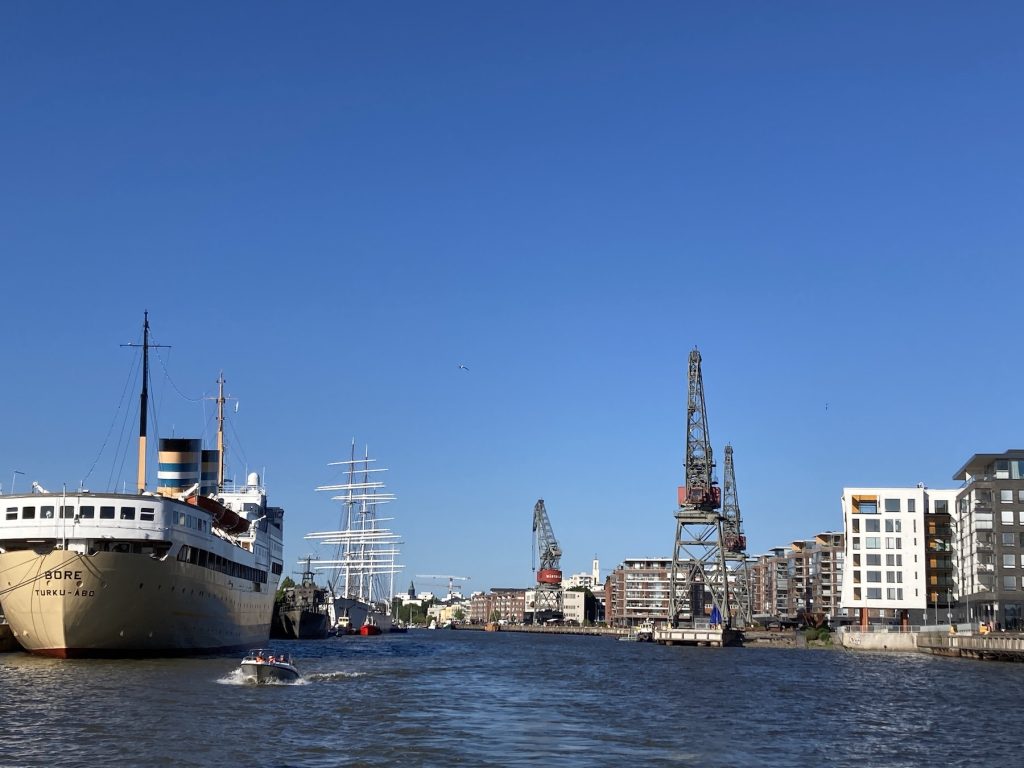On Saturday 19 October, the participants in Nämdöskärgården’s citizens’ council gathered for the first time. The council brought together 25 citizens with different opinions and connections to the Nämdöskärgården. Some were year-round residents while others were part-time or summer residents. After an educational and information-rich first day, the preparations for the next gathering, which will take place on November 16, now begin.
This blog post is an English translation of an article we wrote on the Nämdö Green Archipelago (NGA) website (see the NGA article in Swedish).
The citizens’ jury in the Nämdö archipelago connects with the process of establishing a Biosphere Reserve around Nämdö and its surrounding islands. A collaboration between LANDPATHS and Nämdö Green Archipelago, the citizens’ jury is tasked with generating input on the future development of the archipelago, with a specific focus on which initiatives should be prioritized in the local actors’ continued work to establish the biosphere area.
During the first day, the participants learned more about what a Biosphere Reserve is and listened to different perspectives on the challenges and opportunities the faced in Nämdö.
Speakers during the first day:
- Nämdö Archipelago Biosphere Reserve, Ann Aldeheim, Nämdö Green Archipelago
- Preserve on land and below the surface, Elin Dahlgren, SLU
- Community service and development, Anna Gabrielsson, Värmdö municipality
- Infrastructure and transport, Sune Fogelström
- Business and tourism, Martin Rosén, Stavsnäs Båttaxi
- Social meeting places and culture, Kerstin Sonnbäck, Lower Dalälven Biosphere Reserve
After each presentation, the participants had the opportunity to reflect in small groups on the presented perspectives, ask questions and discuss their views and experiences. Afterwards, the participants were encouraged to write a future vision to describe how they imagine the Nämdö archipelago in the coming years. The day ended with shared reflections and impressions from the day, as well as expectations for the future.
With information, experiences and reflections from the first day, the group will gather again on Saturday 16 November. The focus of the second day will be on delving into the different perspectives, and prioritising and analysing the advantages and disadvantages of different efforts.
The result of the citizens’ jury will form the basis for Nämdö Green Archipelago’s continued work to establish a biosphere area in the landscape.
A big thank you to all participants for your time and commitment!
More information about the citizen jury method
In a citizens’ jury, citizens are selected according to criteria that ensure a broad representation of the public in a small group. Over several days, the participants hear different perspectives, opinions and expert knowledge, and then get to discuss the issue in depth. The process usually ends with a joint conclusion or recommendations. Citizens are compensated for their participation in this process.
For more information about the citizens’ juries taking place within LANDPATHS, contact Tim Daw (leader of the Barriers and opportunities for change project).

